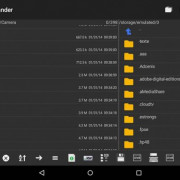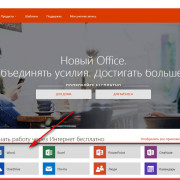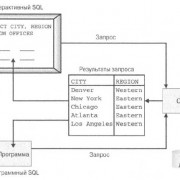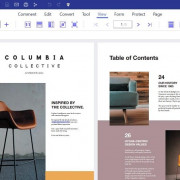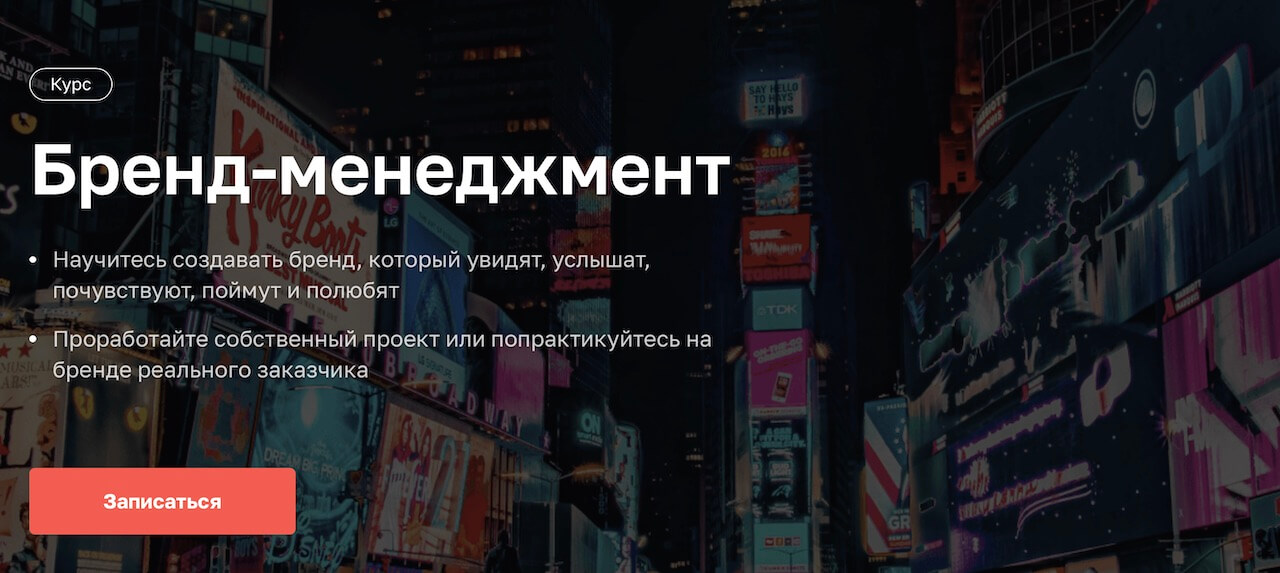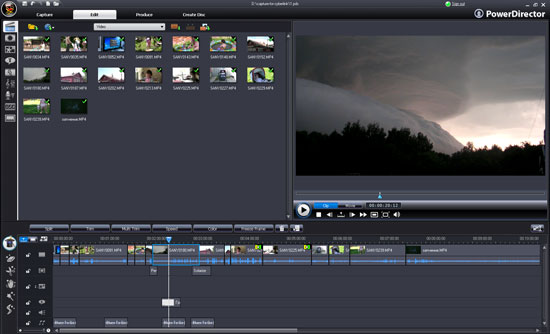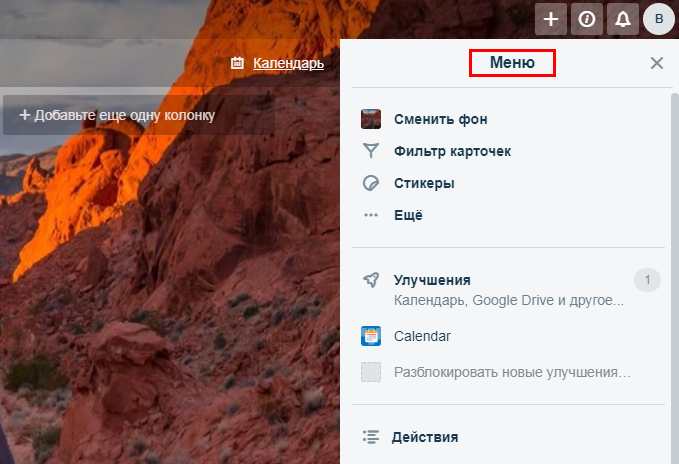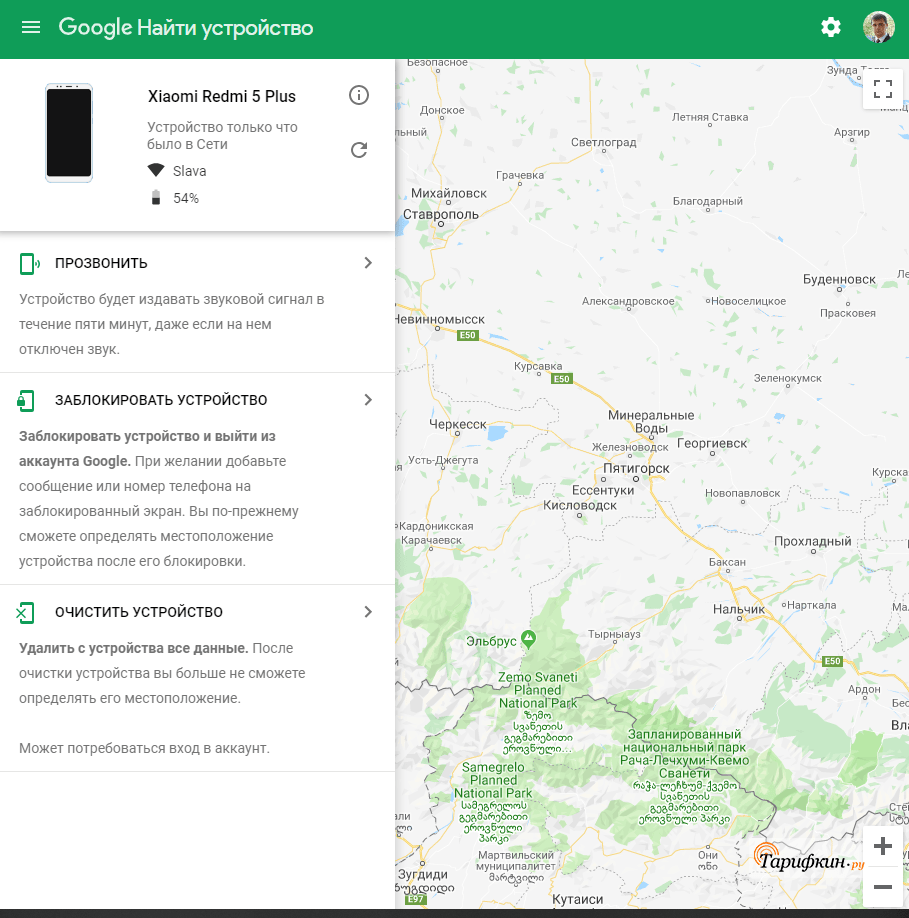Кто такой менеджер проектов: полный обзор профессии
Содержание:
- Суть проектного управления, ее особенности
- Why is Zoho Projects the best project management system?
- Construction Project Management Tools
- Project management vs. work management—which do you need?
- Адаптация проектного менеджера в коллективе
- What Is Project Management Software?
- Airtable
- Podio
- Trello
- Bitrix24
- Construction Project Management Team
- Этапы управления проектами
- Teamwork
- Project Management Roles
- Как организационная структура и культура влияет на управление проектами?
- Quire
- What Can You Do With a Project Management App?
- Teamwork Projects
- The Best Free Project Management Software
- Личные качества и профессиональные навыки успешного PM
- Roles in IT Project Management
- Куда расти
- Что необходимо знать и уметь проджект менеджеру
Суть проектного управления, ее особенности
 Проект в проектном менеджменте (project in project management) – ряд мероприятий, работ, планов и других заданий, ограниченный во временном, ресурсном и финансовом плане и направленный на разработку и создание продукта, имеющего признаки уникальности. Его основными признаками являются:
Проект в проектном менеджменте (project in project management) – ряд мероприятий, работ, планов и других заданий, ограниченный во временном, ресурсном и финансовом плане и направленный на разработку и создание продукта, имеющего признаки уникальности. Его основными признаками являются:
- единоразовость, а не повторяемость;
- ориентация на достижение определенного конечного результата
- уникальность конечного продукта;
- наличие «тройственной ограниченности» – времени, стоимости и содержания, реализуемый замысел всегда имеет четкое начало и конец;
- значительное количество процессов, связанных между собой в различных комбинациях и требующих координации.
Такого рода управление внедряется для того, чтобы повысить конкурентоспособность организации или предприятия, разработать не имеющий аналогов инновационный продукт, повысить эффективность всех уровней взаимоотношений в компании. Политика концентрации всех наличных ресурсов (производственного, кадрового, научного) на приоритетном направлении позволяет снизить себестоимости продукции за счет сокращения времени, затраченного на ее разработку и тестирование. Это, в свою очередь, привлекает дополнительные инвестиции и мотивирует персонал на достижение результата, а не механическое выполнение какого-либо действия. Возможность увидеть плоды свое деятельности вкупе с материальным поощрением позволяет привлекать в фирму перспективных работников.
Все решения и промежуточные действия, производимые на проектных принципах, объединяются в большую систему проектного управления (project management system). Чтобы обеспечить качественную и производительную работу на основе этих принципов, необходим профессионал со специфическим набором знаний и умений. Где же найти такого специалиста и как подтвердить его квалификацию?
Why is Zoho Projects the best project management system?
Zoho Projects makes your work truly rewarding with its extensive
planning, tracking, and collaboration capabilities. It’s a
hassle-free tool that has a simple, easy-to-use interface, with
a mobile application that facilitates your projects from
anywhere, at any time. Features like interactive feeds and
forums, comprehensive charts and reports, time tracking, issue
tracking, task workflow automation, and extensive integrations
make this a go-to application for an all-round project
management experience.
We also care deeply about your privacy. We have developed a
comprehensive set of practices, technologies, and policies to
help ensure your data is secure. If you are currently
maintaining your data on personal computers or on your own
servers, the odds are that we offer a better level of security
than what you have in place.

From initiation to closing, resource management, and handling
issues, Zoho Projects helps you deal with anything, swiftly and
effortlessly.
Construction Project Management Tools
Just as you need the right tools to build a structure, you need the right tools to manage that construction. ProjectManager.com provides construction project scheduling, construction project planning, construction vendor management, cost management in construction projects and other features that allow you to work more efficiently and productively.
When you work with an interactive online construction management software like ProjectManager, project management becomes that much easier. You create a platform on which teams can collaborate and assigning them tasks and tracking progress becomes that simpler. You need a construction management solution that has the following features:
- Cloud-based
- Gantt charts
- Team scheduling
- Dashboards
- Resource allocation & management
- Task lists
- Timesheets
- Online file storage
- Email alerts
- Mobile app
Gantt Charts
ProjectManager has an online Gantt chart maker, which provides a visual timeline for your construction project. It also makes editing construction project schedules super easy. You simply drag and drop a task bar to change the task’s deadline, and you can also see the actual progress in real time as the task bar is shaded each time the status is updated.
Also look for a Gantt chart with task dependencies, so you can connect dependent tasks like steel delivery with the build phase automatically. That way, everyone knows the status of the different phases and aspects of the project. Gantt charts also allow you to find the critical path, which is essential for keeping your project on schedule.
Resource Management
Team scheduling and resource management are other essential features you’ll want, to help you chart the availability, skill set, cost and allocation of your workforce and your construction materials in real time.

You can also monitor their workload and create calendars to help you manage team members’ hours, knowing when they’re going to be out, so you can plan. It also helps with tracking other resources and their costs, such as construction equipment rentals to keep your projects on budget.
Timesheets

Not only your team, but the many vendors you employ on a construction project can be managed anywhere and at any time, with the cloud-based construction project management software from ProjectManager.com. They can send updates while in the field and you can monitor their progress, track costs and performance.
Construction management software from ProjectManager is cloud-based and gives you unlimited file storage for all your documents, and there are even more documents in a construction project than the already paper-heavy regular project. You can then attach those files as needed to any communication or even task, and track updates to the documents.
Project management vs. work management—which do you need?
“Project management (PM) software” has become an umbrella term, encompassing a range of solutions from lighter, collaborative work management tools up to robust portfolio management solutions.
It’s important to understand the differences between these types of software, so you can choose the tool that best meets your needs:
- Work management software helps teams manage workflows, organize tasks and activities (projects and processes), and collaborate in a shared workspace. These tools capture work execution, providing live notifications and views relevant to different stakeholders. Their target user is non-technical business professionals.
- True PM software helps project managers and organizations execute projects: unique initiatives with a set scope (deliverables), timeline, and budget (resources). These tools help businesses plan, monitor, and control costs, schedules, and resources so they can deliver value and meet project success criteria. Their target user is technical professionals, i.e., project managers. Many of these software tools also offer a project management app so you can check status updates and messages and respond on the go.
In order to understand which tool would work best for your business, it also helps to understand the different core features of project management and work management software software. to see our detailed feature descriptions—we’ll highlight the core features of each product in the list below.
Адаптация проектного менеджера в коллективе
При приеме на работу кандидатов без опыта, HR-специалисты смотрят в резюме на следующую информацию:
- Личная информация. Нужно рассказать о себе и своих увлечениях. Специалисты по кадрам смотрят, что соискатель желает получить от работы в компании и чем она интересна.
- Уровень владения английским.
- Курсы, которые окончил кандидат и места прохождения практики. Далее будут интересны навыки владения инструментами для решения задач. Иногда HR-специалисты просят дать ссылки на страницы в соцсетях.
– Если говорить об опытном проект-менеджере, то скорее коллектив адаптируется к нему, а не наоборот.
Особенности адаптации проект-менеджера напрямую связаны со спецификой работы и требуемых в этой профессии качеств.
Проект-менеджер – это человек с проактивной позицией. Тот, кому «больше всех надо». Если раньше проект-менеджер воспринимался как диспетчер, то сейчас это лидер, который берет на себя ответственность и несет её в связке с лицом, принимающим решения.
Постоянно отслеживать проект, быть на связи 24/7, быстро принимать решения и нести за них ответственность, находиться под давлением дедлайнов – непросто даже для опытных руководителей. Следовательно, нужно развивать стрессоустойчивость и решительность, чтобы не паниковать, если вдруг не работает код или заказчик требует поменять дизайн. Для проект-менеджера нет понятия «внезапно». Можно не знать, что конкретно пойдет не так, но нужно быть готовым к этому и иметь ресурсы, чтобы всё исправить, – комментирует Полина Ганкович.
What Is Project Management Software?
Project management software is a platform for managers to plan, monitor and report on projects; it lets teams manage their work and collaborate, too. Good project management software empowers teams, so they can manage all the details crucial for a successful project. Watch the video below to see project management software in action:
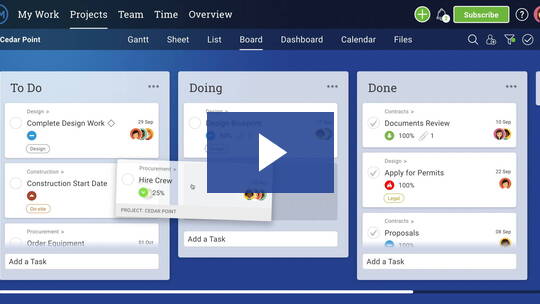
If you’re looking for a better way to manage your tasks and teams, take a free trial of ProjectManager.com today. Our award-winning project management software has a full suite of tools such as Gantt charts, kanban boards and dashboards, so projects can be completed on time and under budget.
Airtable

Airtable is a beautifully designed, table-meets-database solution. It takes what you love about Excel and Google Sheets and puts a modern web-based project on it.
Think of Airtable as a fancy spreadsheet that helps you track inventory, lists of reference items, or as a bootstrap CRM.
Essentially, Airtable is a super-friendly, non-intimidating database for the 21st century, disrupting traditional database management systems that rely on SQL or other complex languages.
If you’ve used Excel as a project management tool in the past, then you may want to look at Airtable. However, we don’t recommend spreadsheets for project management.
Why?
Because dedicated top free project management tools do the job better!
Take a closer look at the tool in our Airtable review.
Here’s What You Get In The Free Version of Airtable:
- Unlimited bases
- Unlimited scheduling views
- Rich field records
- Commenting
- 2GB of storage
- Two weeks of historical data
What People Think About Managing Projects with Airtable:
“I hate that it doesn’t have reminder/follow up capabilities especially knowing they advertise as a team collaboration tool that’s used for customer service.” — G2Crowd
Compare Airtable and ClickUp for project management.
Podio

Podio is almost like a cocktail of project management and messaging software. It offers conversations in the app, and you get an overview of all your tasks.
It supports numerous integrations with popular software like ZenDesk, Evernote, and Google Drive.
What it doesn’t support is workflow automations in the free plan.
No automation in the world of tech.
How do we feel about that ?
What people think about managing projects with Podio:
“Reliable communication with the team through the chat function. Good personal task management and also knowledge management. Even though we stored our files in a cloud service, we ‘indexed’ and sorted our knowledge through Podio.” — Capterra
Trello
Trello has become a popular free project management solution in the last few years by introducing the Kanban board approach to the masses. And you can use it even if you don’t use Agile or Scrum project management methodologies.
However, Trello isn’t perfect.
Not a fan of Kanban boards?
Sorry, but you have nowhere to flee since Trello doesn’t have any other kind of views.
Check out why in our Trello and ClickUp comparison. And learn how to import from Trello into ClickUp.
What you get in the free version of Trello:
- Unlimited boards, task lists, cards, users, checklists, and attachments
- One integration per board
- Up to 10MB for files
What people think about managing projects with Trello:
“So far Trello is doing a great job. What is advertised is done as expected. The only thing I will like to mention is the modern user interface. I would really like to have a new and fresh look for this software which will make the user experience more effective.” — G2Crowd
Bitrix24
-
Объединить сотрудников даже самой большой команды в общем рабочем пространстве.
-
Наладить общение в живой ленте или чатах, совершать звонки аудио и видео, обмениваться файлами.
-
Создавать группы, проекты, доски, ставить задачи и подзадачи, назначить исполнителей.
-
Смотреть отчеты.
-
Хранить 5 ГБ файлов в облаке.
-
Настроить мобильную CRM.
-
Интегрировать Bitrix24 с Google Drive, Dropbox, Яндекс Диск, One Drive.
-
Редактировать документы в режиме онлайн в GoogleDocs и MS Office Online.
За что точно придется платить:
-
Настройка бизнес-процессов. Если у вас много регулярных процессов, например, согласование договоров, вам будет удобнее на платном тарифе.
-
Создание воронки продаж. В бесплатной версии можно построить только одну общую воронку.
-
Сквозная аналитика.
-
Полноценная IP-телефония. Если планируете контролировать количество и качество звонков – переходите на платный тариф. Бесплатно можно записать только 100 звонков, и места дается только 5 ГБ.
-
Интеграция CRM с 1C. Актуально для многих команд.
-
Настройка прав доступа (на всех уровнях: доступ к задачам, доступ к файлам и папкам, доступ к CRM, к телефонии…).
-
Ряд второстепенных, но приятных функций: регулярные задачи, шаблоны проектов и задач, наблюдатели и соисполнители, учет рабочего времени.
Бесплатная версия Bitrix24 вполне подходит для работы, если у вашей команды нет особых запросов. Если вам нужна только работа с задачами – спокойно оставайтесь на free-версии. Если же вы хотите построить в системе управления полноценные бизнес-процессы, создать воронки продаж, настроить сквозную аналитику, интегрироваться с 1С и почтой – выбирайте платный тариф. Платных тарифов целых 5, они заточены под разные цели. Однако, на наш взгляд, Bitrix24 настолько напичкан всевозможными функциями, что встает вопрос: всегда ли они действительно нужны и легко ли их применять на практике?
Construction Project Management Team
Project Owner
The project owner commissions the project and directly or indirectly finances it. In addition to this, the owner supervises the project from a high-level view and makes important decisions such as defining the bidding process, selecting the contractor and choosing the project delivery method.
Construction Project Manager
Construction project management is run by a construction project manager. This person is tasked with the planning, coordination, budgeting and supervision of the construction project.
Construction project manager responsible for the following tasks:
- Estimate and negotiate project costs
- Formulate the construction budget
- Manage the construction scheduling and work timetables
- Manage work orders
- Determine which project management methods and strategies are appropriate for the project
- Communicate with the project owner and stakeholders, re. budget, progress, etc.
- Lead or interface with job site workers, teams and other construction professions on technical and contract details
- Work with building, construction and regulatory specialists
The construction project manager is usually a Project Management Professional (PMP) certified by the Project Management Institute (PMI). The Project Management Body of Knowledge explains the different roles and responsibilities of a project manager in depth.
Also, the Construction Management Association of America (CMAA) explains the responsibilities of a construction manager, which is basically a project manager that specializes in the construction industry.

General Contractor
A general contractor oversees the daily operations of the job site and provides the equipment, materials and labor required for the execution phase of the construction project. General contractors usually hire subcontractors to execute specific tasks.
These are some of the main responsibilities of a general contractor:
- Supervising the work of subcontractors
- Setting up job site safety protocols
- Applying for building permits and licenses
- Disposing construction waste
- Managing personnel on the construction site
- Communicating with the project owner and construction project manager
A general contractor is selected after the project owner reviews bids from multiple general contractors and chooses the bid that better adjusts to the project needs. Let’s see how this bidding process works.
Этапы управления проектами
Любой проект делится на несколько этапов. Контролировать исполнение каждого и должен менеджер проектов.
- Начало. Клиент обращается в агентство, обсуждаются цели и задачи проекта. Например, человек хочет продвигаться с помощью контент-маркетинга. Принимается решение о запуске проекта, обсуждается стратегия выполнения: создаем блог и наполняем его статьями. Назначаются ответственные – проект-менеджер, команда специалистов: копирайтеры, редакторы, дизайнеры.
- План работ. Вместе с заказчиком обсуждается первоначальный план работ и сроки их исполнения. Если речь идет о создании блога – утверждается редакционная политика, движок блога, создаются рубрики, определяются темы статей. Составляется контент-план: график выхода статей. Авторы и редакторы распределяют между собой темы.
- Выполнение. Закипела работа: копирайтеры пишут, редакторы вычитывают, верстальщики публикуют статьи в новом блоге, дизайнеры красиво оформляют. Параллельно проект-менеджер следит, как идет работа, укладываются ли сотрудники в сроки, и отчитывается о ходе работ заказчику.
- Закрытие проекта. Если проект ограничен по времени (например, создали заказчику сайт – все, дополнительных задач не требуется), после утверждения и принятия его закрывают. Если работы планируется продолжать и дальше (например, по наполнению и продвижению блога) – с клиентом не прощаются и могут вести его долгие годы.
В обязанности проект-менеджера входит ведение проекта от первого до последнего этапа. Эдакий многорукий Шива, который обязан все предусмотреть и проконтролировать.
Рассмотрим, что конкретно делает менеджер проектов на каждом этапе и какие подводные камни его ждут.
Teamwork
Teamwork is a cloud-based work management solution that helps teams collaborate, organize tasks, and deliver on time. Key features include Gantt charts, Kanban boards, task management, collaboration, reporting/project tracking, time tracking, and resource management.
- Free plan: Includes access for five users, two active projects and 100MB storage, and multiple support options (email, live chat, phone, online knowledge base, and training guides).
- Paid plans: Include additional projects, greater storage, priority support, and more robust tracking, such as the portfolio view and risk register. To upgrade to a paid plan, the cost is $12.50 per user, per month. There is a slight discount if paying annually.
Project Management Roles
A project works best when project management roles are well-defined. While there are methods of project management allowing for more fluidity, these are the main roles on a project:
- Project Sponsor: This is the person accountable for the outcome. The project sponsor are often the senior manager who has come up with the idea for the project and their team will get the benefit. Ultimately, they represent the customer of the project. Depending on the organization, there can be different levels of project sponsors, such as an executive project sponsor.
- Supplier: Someone is doing the work, and that might be an internal supplier such as a development team or an external contractor. The supplier is represented on the project team by their main point of contact who might be their technical expert, an account manager or a project manager.
- Team Member: This is a person tasked with completing a part of the project. Team members are skilled professionals, who work to contribute to the process of achieving the project objectives and goals. Often they are tasked with documenting the process, as well.
- Stakeholder: This is a person or a group who has a vested interest or “stake” in the project. It might be an internal group or agency within an organization or it might be the public at large for a public works project. The project manager communicates project progress to stakeholders throughout the lifecycle of the project and seeks feedback on project deliverables and performance.
- Clients: This is a group or a person for whom the project or a key component of the project is delivered.
Как организационная структура и культура влияет на управление проектами?
Компании могут иметь всевозможную организационную структуру. От классической функциональной иерархии, в которой каждый человек отчитывается только перед одним руководителем, до матрицы, которая является частично иерархической и частично ориентированной на проекты, где большинство людей работают над проектами.
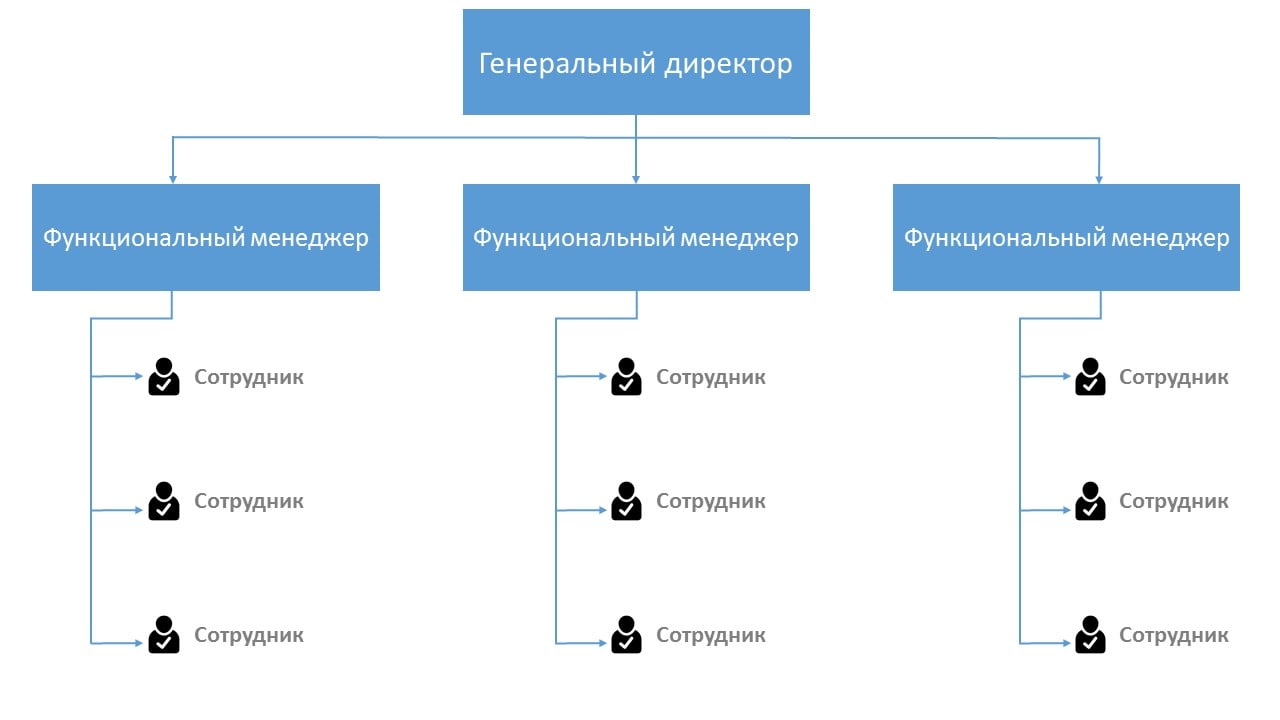
Каждая из этих структур влияет на то, как выполняются проекты. В функциональной иерархии проекты не являются приоритетными, что затрудняет достижение успеха самого проекта. Менеджеры проектов практически не имеют полномочий. Функциональный менеджер обычно отвечает за такие вещи, как бюджет проекта. Трудно найти ресурсы, потому что они подчиняются функциональным менеджерам, а не руководителю проекта.

Матричные структуры управления все еще являются функциональными иерархиями, но они поддерживают проекты больше, чем чистые иерархии. Они могут быть слабыми, сбалансированными или сильными матрицами, в зависимости от того, сколько внимания они уделяют проектам. В матричной системе руководители проектов имеют определенные полномочия в принятии решений. Ресурсы, выделенные на проекты, подотчетны двум менеджерам, а также персональному руководителю проекта.
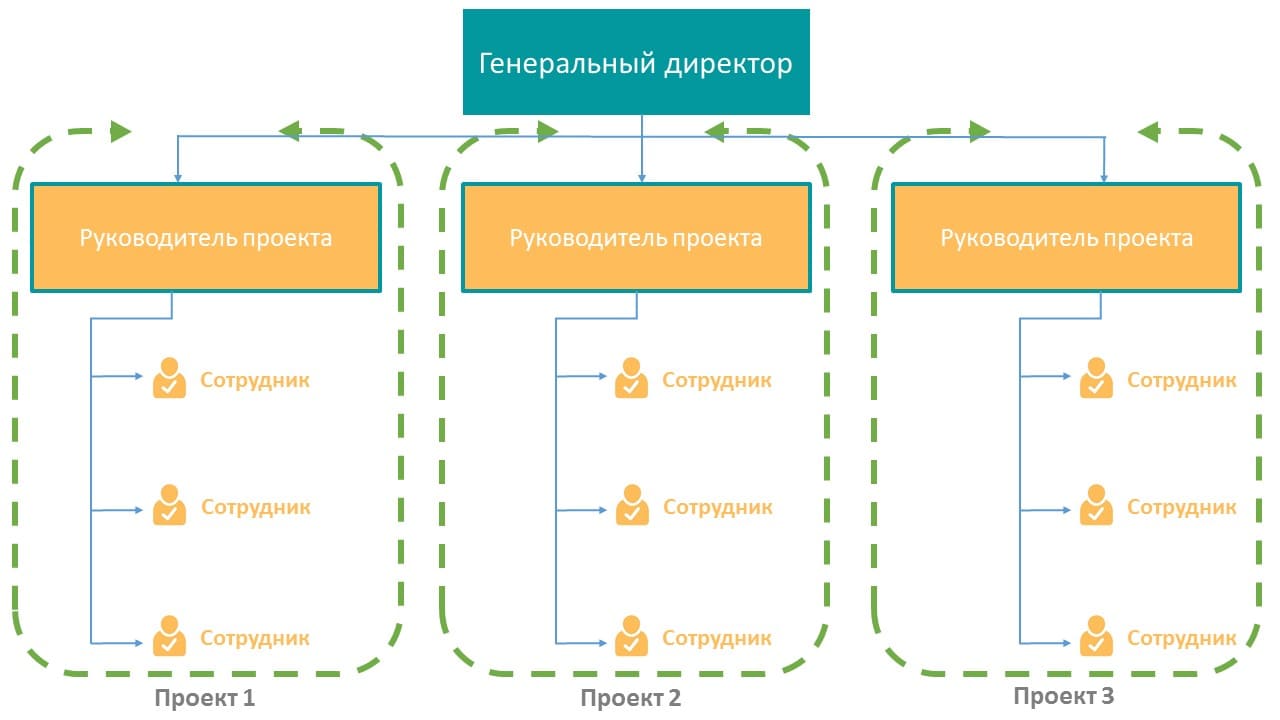
Проектная структура управления значительно облегчает руководителям проектов достижение результатов. Менеджеры проектов имеют почти полную власть над своими проектами, включая бюджет. Людские ресурсы, выделенные для работы над проектом, отчитываются руководителю проекта, которому они назначены.
Организационная структура оказывает большое влияние на то, как выполняются проекты, сколько может сделать руководитель проекта и насколько легко реализовать назначенный проект.
Организационная культура – это совокупность общих ценностей, убеждений, предположений, привычек и других факторов, которые определяют поведение и решения людей в организации. Все эти факторы организационной культуры влияют на выполнение проектов и их успешность. Давайте рассмотрим то, как организационная культура влияет на проекты.
Миссия и видение организации формируют культуру организации. Проекты, которые поддерживают миссию компании, могут привлечь больше внимания и ресурсов. Когда вы сталкиваетесь с непростым решением, вы можете использовать миссию, чтобы определить, как лучше поступить.
Лидерство и авторитет также являются важной частью организационной культуры. Если руководство определяет четкие цели, а затем делегирует ответственность сотрудникам, этот подход одинаково хорошо работает в ваших проектах
Другим аспектом культуры является рабочая среда организации. Например, в благоприятной обстановке люди мотивированы и готовы добиваться цели. Извлекать уроки легко, потому что сотрудники привыкли вносить свой вклад и стремиться к улучшению. С другой стороны, в негативной среде вам, вероятно, придется потратить много времени на управление своей командой.
Некоторые культуры верят в соблюдение правил, несмотря ни на что. Другие культуры поощряют инновации, ожидая, что сотрудники попробуют новые подходы, зададутся вопросом, что было сделано ранее, и придумают лучшие методы достижения результата
Вам не нужно следовать правилам в культуре, основанной на правилах, но если вы думаете о нарушении правил, важно знать, какие из них вы можете нарушить. А также подумайте о том, что вы будете делать, если ваш нестандартный подход не сработает
Управление изменениями может зависеть от культуры организации. Если компания не склонна к риску, процесс управления изменениями может включать в себя несколько раундов анализа реформ и требует одобрения нескольких человек. С другой стороны, если изменение рассматривается просто как жизнь в мире управления проектами, процесс управления изменениями, вероятно, будет намного проще.

В проектах с людьми, работающими в разных частях страны или мира, вам также необходимо учитывать культуру членов вашей команды. Люди могут по-разному реагировать на ситуации или общаться по-разному в зависимости от норм своей культуры. Например, в некоторых культурах людей учат не проявлять слабости, что в других культурах может быть истолковано как высокомерие.
Quire
Quire is a cloud-based project management solution designed to help small and midsize businesses manage to-do lists and tasks to enable collaboration across teams. Key features include document management, real-time editing, communication tools, discussion boards, file sharing, milestone tracking, and project planning.
Teams using Quire can arrange and prioritize tasks via a Kanban board so members can visualize workflows. Managers can assign tasks to team members, sort assignments according to priority, filter tasks, and view start/due dates of projects using Gantt charts. Additionally, users can follow tasks in order to receive reminders in registered devices about upcoming deadlines.
Free plan: Quire only offers a free plan at this time. According to their website, they’re currently working on paid versions, but whatever is free now will continue to be free even after paid versions have been added.

Kanban board in Quire (Source)
What Can You Do With a Project Management App?
Project management apps let you track and manage nearly any kind of project, such as the creation of a new product, building a house or website, or launching a marketing campaign. Teams that use project management apps are typically tracking more than one project at a time. The software helps them figure out when to schedule work based on when things need to get done and the human resources available to do it.
The very best project management apps detect problems before they happen. By tracking the progress of work, they can sound an alarm when a deadline is in danger of slipping, but before it happens. The most powerful project management apps also offer to automatically reflow the project schedule when tasks do fall off course. They generate reports that give managers insight into which team members have too much or too little work assigned to them. Many let you track project budgets, too, and log billable hours so that you can send invoices to clients for time worked.
TeamGantt’s Gantt chart and workload view
Teamwork Projects

Teamwork Projects is a very well-known project management system or software geared more for audiences needing enterprise management with single sign-on, HIPAA compliance, and premium support.
Their paid plans have many feature options for teams and offer a suite of tools such as billing and invoicing.
However, their free tier is quite limited.
Many clients and teams will pony up for those advanced features, but it’s a risk if you don’t want to be locked into a long-term pricing plan. For instance, in the Pro plan, you get lots of integrations such as Dropbox and Slack, way more storage, and up to 50 users.
What people think of Teamwork Projects:
“The software seems to be popular just in Europe, so there are a few third-party apps which have developed something connected to Teamwork, but it has access to the API and webhooks to compensate.” — G2Crowd
The Best Free Project Management Software
A few of the best project management software systems have free versions. Usually, these free versions are severely limited in some way. For example, you might be allowed to manage only one or two projects or invite only a handful of people to work alongside you. Plus, you usually don’t get all the best features of the app in the free version. Still, if you have a small team and need to only manage one or two projects, it might work.
You can get a free account from Zoho Projects, Teamwork, Wrike, TeamGantt, ProofHub, plus a few others that did not make this list, such as Volerro and AceProject.
Redmine, which did make this list, is a 100-percent free project management app, but you have to install and maintain it yourself. It’s not an off-the-shelf product, but rather an open-source alternative.
Teamwork’s project management dashboard
Личные качества и профессиональные навыки успешного PM
Ты станешь крутым проджектом, если разберёшься во всех ИТ-направлениях. В теории, конечно. Нужно будет ориентироваться в основных терминах, чтобы правильно и чётко ставить задачи своим специалистам, а также уметь выполнять простые технические операции. Например, распознать, а где-то и самому исправить ошибки, которые прозевал твой QA.
Очень важны для работы soft skills — навыки общения. Тебе придётся находить общий язык с разными людьми. Ты должен быть не просто номинальным руководителем команды, а сделать так, чтобы к тебе прислушивались, ценили твоё время и нервы, выполняли просьбы и задачи. Также ты должен быть терпелив. Команда и заказчики будут задавать миллион вопросов. Первым тебе нужно будет прийти на помощь, а в общении со вторыми правильно оценивать ситуацию и научиться жонглировать ответами. Ещё тебе пригодится умение вести переговоры на иностранном языке с заказчиками или сотрудниками компании. Первым испытанием твоих soft skills будет собеседование с HR-специалистом.
Научись применять навыки тайм-менеджмента. Если ты сам не можешь вписаться в дедлайны, вряд ли правильно распределишь время команды и проследишь за ходом работы.
Roles in IT Project Management
Roles and responsibilities in IT project management mostly mirror those projects in other disciplines. There are stakeholders, who are those who have an interest in the project; teams, who are those with skills to execute the project plan; and the IT project manager, who is the person that is responsible for the planning, procurement and execution of the project.
Types of IT Teams
Where roles differ from more traditional projects is in the teams themselves. While more project management is executed by teams, whether remote or on site, they are largely part of the overall organization that is implementing the project. However, with IT project management there are three types of teams.
- First, there is the traditional project management team that is tasked with an IT project. These teams are not exclusive to IT and are led and staffed with a formal project management methodology.
- Second, there are professional services teams, who deliver technology to external customers. This is usually done with the implementation of software or installation of hardware. They are often led by a project manager, but can be headed by a services vice-president or director. However, they also use formal types of project management.
- Thirdly, there are internal IT teams. These are the teams that manage the delivery and maintenance of the technology in an organization. They roll out new systems, set up computers, monitors, phones and other devices for employees and manage the systems. They can be led by a project manager, though that person is usually defined within the company as a director or vice-president of IT.
The IT Project Manager
The IT project manager, due to the breadth of IT project management, has a wider range of responsibilities than most other project managers. They are not only dealing with leadership, resource allocation, scheduling and planning, monitoring and reporting, but must know about technology beyond the tools that they use to manage projects.
IT project managers are responsible for understanding firmware and being able to implement software integrations. They often build websites and databases, and manage these technologies as well. This includes building networks and maintaining security for data risks.
However, the basic structure of the IT project manager’s job remains being a clear communicator, setting realistic goals and applying the right methodology to achieve them. They must motivate and inform both teams and stakeholders, manage change and set the project schedule. The triple constraint of any project is still present. Therefore, the IT project manager, like any project manager, is concerned with setting deadlines and keeping to a budget. This is all managed through methodology.
Куда расти
Я бы обозначил три ветки развития карьеры проектного менеджера:
- Вертикальный рост. Вы уже не просто менеджер, а руководитель отдела управления проектами. Вы распределяете задачи уже не разработчикам и тестировщикам, а подчиненным проектным менеджерам.
- Увеличение масштабов компании. Либо стартап, в котором вы начинали, вырос до крупной IT-компании, либо вы чувствуете в себе потенциал для работы в более масштабной организации. Тут и увеличение ответственности, и количества проектов, и вознаграждения за труд.
- Усложнение проектов. Это горизонтальный рост внутри компании. Если раньше вам доверяли координировать отдельный модуль или несложный проект, то с увеличением опыта вы начинаете вести более комплексные многоуровневые проекты, в которых задействовано несколько команд.
Несмотря на сложность и зачастую непредсказуемость в работе, профессия project-менеджера мне очень нравится. С одной стороны – это постоянная новизна, общение с людьми, решение нетривиальных задач, с другой – четкость критериев оценки и наглядность результатов труда. Правильно понял потребности заказчика, правильно поставил задачу, команда выполнила все в срок и все работает, как нужно – получаем довольного клиента и удовлетворение команды от завершения проекта.
Что необходимо знать и уметь проджект менеджеру
Из-за разнообразия выполняемых функций и решаемых задач необходим широкий спектр личных качеств и профессиональных навыков:
- развитые коммуникативные навыки, умение находить общий язык с самыми разными людьми, способность объяснять так, чтобы каждый понял, что имеет ввиду и что от него требуется;
- умение убеждать;
- развитые лидерские качества;
- аналитический склад ума;
- ответственность;
- терпеливость;
- умение работать поэтапно, пошагово;
- креативность;
- гибкость;
- умение распоряжаться временем, эффективно использовать и распределять не только свой график, но и членов команды;
- стратегическое мышление;
- знание офисных программ, умение вести документооборот;
- владение иностранными языками, английским хотя бы на базовом уровне, т. к. много работы связано с разработкой, а также есть вероятность работы с иностранными партнерами;
- знание специфического программного обеспечения;
- умение работать в программах, помогающих организовать работу группы, например, «Трелло»;
- базовые экономические знания;
- знание законодательства;
- владение методологией управления проектами;
- знание и понимание бизнес-процессов.
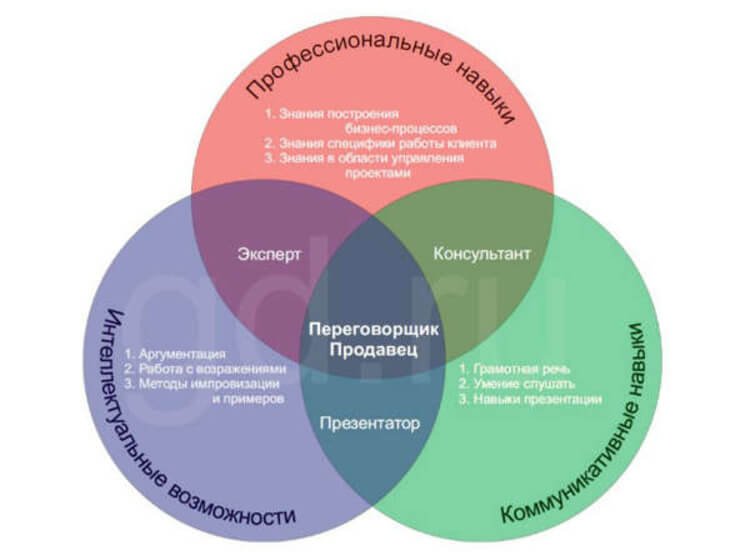
Также потребуются знания из самых разных областей: от маркетинга до программирования. Конечно, речь не идет о высоком уровне владения, но понимание базовых принципов должно быть, иначе координировать работу других сотрудников будет проблематично.
